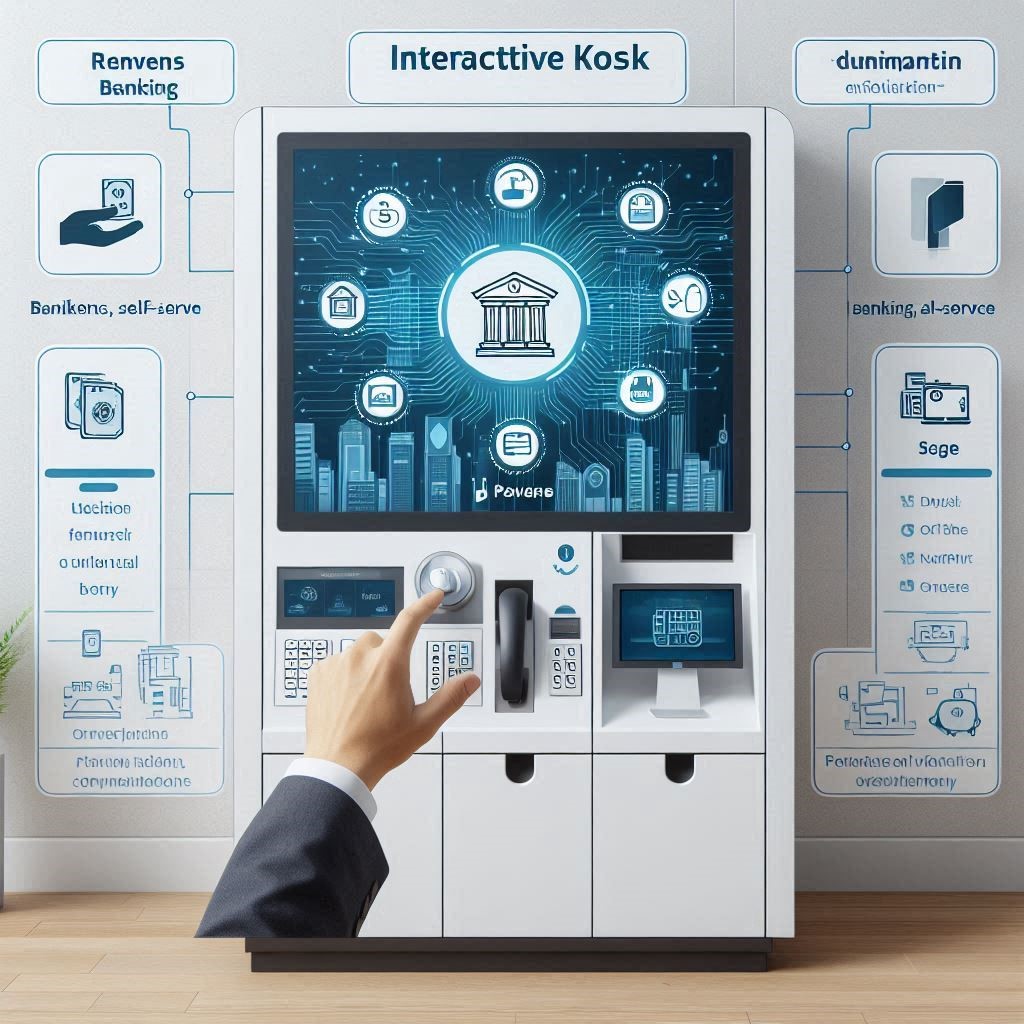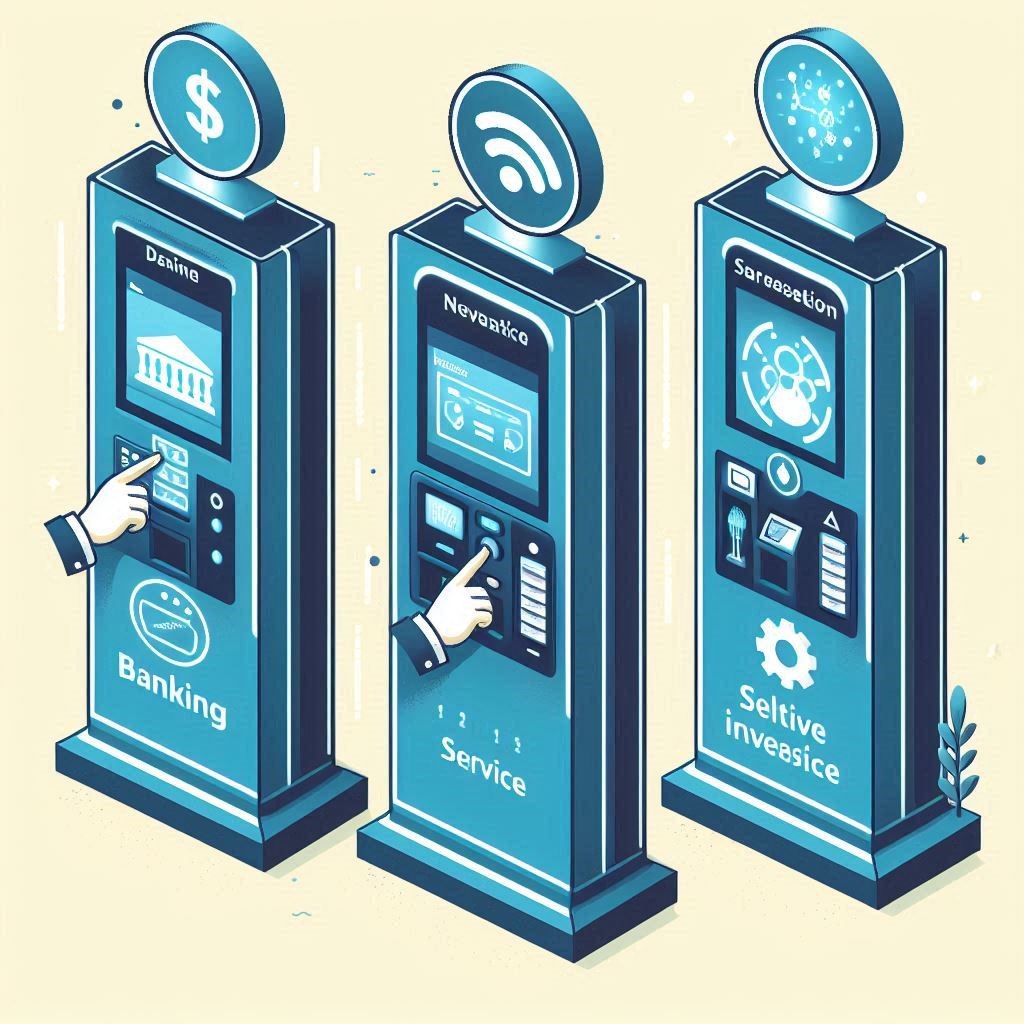The rise of digital transformation has redefined the way businesses interact with their customers, offering more efficient and engaging experiences. One of the standout innovations driving this change is the interactive kiosk display. These smart, touchscreen-enabled devices are revolutionizing customer interactions, providing a seamless, intuitive experience in a variety of sectors including retail, healthcare, education, hospitality, and transportation.
From offering self-service checkouts to providing essential information, interactive kiosks are increasingly becoming an integral part of modern businesses. This article explores how the interactive kiosk display industry is reshaping customer engagement and why these kiosks are now considered the cornerstone of seamless digital experiences.
An interactive kiosk display is a self-contained, touchscreen-enabled device designed to facilitate user interaction with digital content in public spaces. These kiosks typically feature an intuitive interface that allows users to navigate through menus, access information, complete transactions, or interact with a business’s digital offerings, all in a user-friendly and contactless manner.
Unlike traditional static displays, interactive kiosks are equipped with advanced technology that makes it easier for customers to perform tasks autonomously, without the need for human assistance. The self-service nature of these kiosks ensures faster interactions and allows businesses to streamline operations.
The global interactive kiosk market was valued at USD 31.8 billion in 2023 and is projected to reach USD 48.8 billion by 2029; it is expected to register a CAGR of 8.9%
Key Features of Interactive Kiosk Displays
Interactive kiosks come with a range of features that make them essential for providing seamless, efficient, and engaging customer experiences. Some of these features include:
Touchscreen Interface: The intuitive touchscreen interface allows customers to interact with the device directly, choosing options and inputting information effortlessly.
Multimedia Capabilities: Interactive kiosks support multimedia elements such as videos, images, and animations, making it possible for businesses to deliver rich, dynamic content to customers.
Real-time Updates: Many interactive kiosks are connected to live databases and systems, allowing them to provide up-to-date information on products, services, and availability in real time.
Payment Solutions: For businesses in retail, hospitality, and transportation, interactive kiosks enable customers to make payments securely, using card readers, mobile wallets, or contactless payment methods.
Customization: Businesses can tailor the software and content on interactive kiosks to suit their specific needs, ensuring that the kiosk matches their branding, service offerings, and customer expectations.
Cloud Connectivity: With cloud integration, businesses can remotely manage, update, and analyze the data generated by interactive kiosks, optimizing their functionality and user engagement.
Download PDF Brochure @ https://www.marketsandmarkets.com/pdfdownloadNew.asp?id=221409707

Industry Applications of Interactive Kiosk Displays
Interactive kiosk displays are versatile and have found applications in various industries, improving customer experiences and operational efficiency. Some of the most prominent sectors utilizing these kiosks include:
1. Retail
In the retail industry, interactive kiosks provide customers with a personalized shopping experience. Shoppers can search for products, check prices, access inventory levels, and even complete transactions without waiting in line. This self-service capability reduces customer wait times and enhances the in-store experience. Many kiosks also offer loyalty program sign-ups, promotional content, and product recommendations, driving sales and customer engagement.
2. Healthcare
Healthcare providers are increasingly adopting interactive kiosks in medical facilities, hospitals, and clinics. These kiosks allow patients to check in for appointments, fill out forms, access health information, and make payments without interacting with administrative staff. They are also used for wayfinding purposes in large hospitals, providing patients and visitors with easy-to-navigate maps and directions.
3. Education
Interactive kiosks have found a place in educational institutions, offering students and faculty quick access to campus information, academic schedules, and event updates. Some institutions have adopted these kiosks for self-service registration, enrollment, and document printing, allowing students to complete administrative tasks efficiently and without long waits.
4. Transportation
Airports, train stations, and bus terminals have embraced interactive kiosks to streamline passenger services. These kiosks enable passengers to check in for flights, print boarding passes, select seats, and even make payments for parking or baggage fees. Additionally, digital kiosks at transportation hubs provide real-time updates on schedules, gate changes, and ticketing options.
5. Hospitality
In the hospitality industry, interactive kiosks are used for self-check-in at hotels, allowing guests to quickly complete the check-in process without waiting at the front desk. Guests can also use kiosks to access information about hotel services, book reservations, check out, and even provide feedback on their stay. This not only improves operational efficiency but also enhances the overall guest experience.
Advantages of Interactive Kiosk Displays for Businesses
Businesses across various industries are increasingly investing in interactive kiosk displays because of the numerous advantages they bring to the table. Here are some of the top benefits for businesses:
1. Increased Efficiency
Interactive kiosks automate many tasks that would otherwise require human interaction, such as processing transactions, providing directions, and assisting with check-ins. This automation increases operational efficiency and reduces the workload on staff, allowing them to focus on more complex tasks.
2. Cost Savings
By reducing the need for dedicated staff at service points, businesses can cut down on labor costs. Additionally, interactive kiosks can help reduce errors in tasks like data entry and billing, which ultimately lowers the cost of customer service and improves accuracy.
3. Enhanced Customer Experience
The ability to offer self-service options means that customers can interact with a business on their own terms, without waiting in long lines or depending on staff availability. This flexibility leads to increased customer satisfaction, with customers appreciating the convenience, speed, and efficiency that interactive kiosks provide.
4. Better Data Collection
Interactive kiosks can track customer interactions and collect valuable data, such as browsing behaviors, transaction history, and preferences. This data can be used by businesses to improve their offerings, customize marketing strategies, and refine customer engagement efforts.
5. Increased Sales and Revenue
In retail environments, interactive kiosks can drive sales by allowing customers to access product information and promotions easily. Kiosks can also help upsell and cross-sell products by recommending items based on user preferences, leading to higher revenue generation.

The Future of Interactive Kiosk Displays
The interactive kiosk display industry is set for continued growth, fueled by advancements in technology. As businesses increasingly adopt digital solutions, the role of kiosks in improving customer experiences will only expand. Key trends shaping the future of interactive kiosks include:
Artificial Intelligence (AI) Integration: AI-powered kiosks will offer even more personalized experiences, using machine learning to anticipate customer needs and provide tailored recommendations.
Voice Assistance: With the rise of voice-activated technology, interactive kiosks will integrate voice recognition features, enabling users to interact with kiosks hands-free.
Contactless Solutions: In response to health and safety concerns, touchless and contactless kiosks will become more common, allowing users to interact using gestures, QR codes, or mobile apps.
Augmented Reality (AR): AR could be integrated into interactive kiosks to offer immersive experiences, such as virtual product demos or interactive maps.
Interactive kiosk displays are revolutionizing the way businesses engage with customers, providing a seamless digital experience that’s both efficient and user-friendly. From retail and healthcare to transportation and hospitality, interactive kiosks are proving to be valuable assets, not only in enhancing customer satisfaction but also in optimizing operations and driving revenue.
As technology continues to evolve, so too will the capabilities of interactive kiosks companies . In the digital age, investing in interactive kiosk displays is a strategic move for businesses looking to stay ahead of the curve and provide exceptional customer experiences.
About MarketsandMarkets™
MarketsandMarkets™ is a blue ocean alternative in growth consulting and program management, leveraging a man-machine offering to drive supernormal growth for progressive organizations in the B2B space. We have the widest lens on emerging technologies, making us proficient in co-creating supernormal growth for clients.
The B2B economy is witnessing the emergence of $25 trillion of new revenue streams that are substituting existing revenue streams in this decade alone. We work with clients on growth programs, helping them monetize this $25 trillion opportunity through our service lines – TAM Expansion, Go-to-Market (GTM) Strategy to Execution, Market Share Gain, Account Enablement, and Thought Leadership Marketing.
Built on the ’GIVE Growth’ principle, we work with several Forbes Global 2000 B2B companies – helping them stay relevant in a disruptive ecosystem. Our insights and strategies are molded by our industry experts, cutting-edge AI-powered Market Intelligence Cloud, and years of research. The KnowledgeStore™ (our Market Intelligence Cloud) integrates our research, facilitates an analysis of interconnections through a set of applications, helping clients look at the entire ecosystem and understand the revenue shifts happening in their industry.
To find out more, visit www.MarketsandMarkets™.com or follow us on Twitter, LinkedIn and Facebook.
Contact:
Mr. Rohan Salgarkar
MarketsandMarkets™ INC.
1615 South Congress Ave.
Suite 103
Delray Beach, FL 33445
USA : 1-888-600-6441